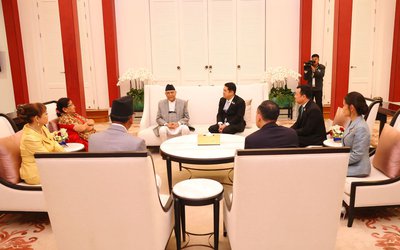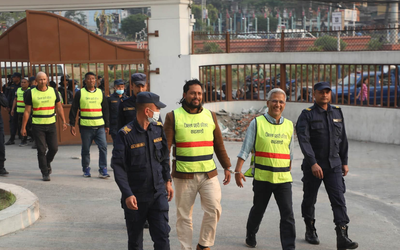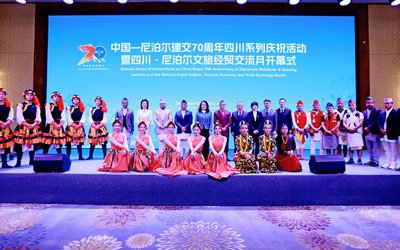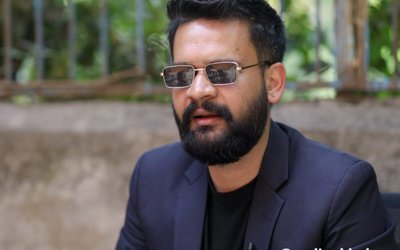More on News





China and Nepal are close friendly neighbors linked by mountains and rivers. As early as 406 AD, the Chinese monk Fa Xian visited Nepal and wrote books about his visit, which made him the first goodwill envoy who had introduced Nepal to Chinese people. In Yuan Dynasty, the famous Nepalese craftsman Arniko came to China and built White Pagoda of the Miaoying Temple, which had been considered as a landmark of friendly exchanges between the two peoples.
After the founding of the People's Republic of China, on August 1, 1955, our two countries signed the "Joint Communique" in Kathmandu which marked the establishment of diplomatic relations. During the last 56 years, the friendship between our two countries has withstood the test of changing global environment and our domestic situations. Our bilateral relations had maintained a healthy, stable and comprehensive development on the basis of mutual respect, mutual trust, and Five Principles of Peaceful Coexistence, which has become the model of the exchanges between two countries.
On December 30, 2009, the two countries issued the "Joint Statement" which upgraded the bilateral relations to Comprehensive Partnership of Cooperation featuring ever-lasting friendship. In January 2012, Chinese Premier Wen Jiabao visited Nepal ten years after his predecessor. During the visit, Premier Wen met with Nepalese government officials and leaders of major political parties, extensively exchanged views with them on the development of relations between China and Nepal, and the two governments signed a series of bilateral cooperation documents. After their meeting, China and Nepal issued a "Joint Statement" which promoted the bilateral relations into a new height.
As Chinese Ambassador to Nepal, I am pleased to witness and participate in the rapid development of our bilateral relations. I will do my best together with Nepalese friends from various circles to seize the good opportunities of the development of friendly relations between our two countries and expand cooperation in various fields such as politics, economy, culture, education and people to people exchanges, which would constantly reinforce the basis of our friendship and cooperation, and continuously tighten the ties of traditional friendship between the two peoples, to jointly push forward our Comprehensive Partnership of Cooperation.
At present, the political development in Nepal is at a critical and complicated stage, and there is still some difference among political parties. Each side is now making great efforts to crack the hard nut, and this has reminded me of a story from an ancient Chinese book named the Art of War by Sun Tzu. It is said in the story that in the ancient times, The people of the Wu State and the Yue State often fought with each other, and regarded each other as an enemy. Once, some Wu people and Yue people were on a same boat. When the boat went to the middle of the river, a strong wind blew the boat sinking into the water. The people of the two states worked in full cooperation and with unity of purpose, eventually they arrived at the bank of the river. Chinese people learnt from this story and summed up with four characters "Tong Zhou Gong Ji" (sailing in the same boat). We sincerely hope that all Nepali parties and factions can join hands to overcome this difficult period, and realize the rapid economic and social development as soon as possible.
Yang Houlan is Chinese ambassador to Nepal. Excerpts of his statement delivered at the Interaction Program held by Nepal-China People's Friendship Society.(Chinese Embassy website)




